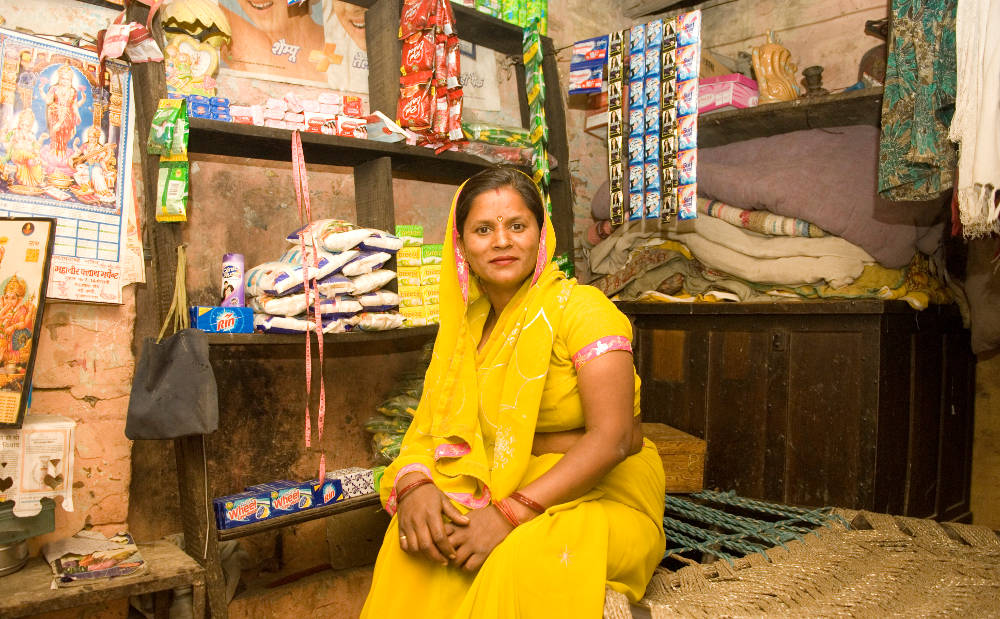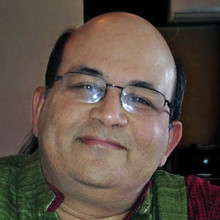[Photograph - Geeta Devi, Rural Marketing HUL Shakti Programme by Ramesh Pathania / Mint]
“Amazon reaches a billion dollar in revenue in India in just three years.”
“Drones will soon be delivering packages at your doorstep.”
“Indian start-ups set to take on the world.”
In all the excitement driven by headlines such as these, I hope we can be forgiven for forgetting that there are hundreds of millions of Indians whose real needs are not being met because they have limited purchasing power, and are difficult to access—the so-called bottom-of-the-pyramid (BoP).
So, I am glad that Pradeep Kashyap, the founder of India’s premier rural marketing consultancy, MART, reminded us of the importance of innovating for the BoP by organizing a one-day conference in Delhi recently.
Some key ideas were reiterated and others re-formulated to give a useful perspective on innovation at the BoP. Here are a few of my key takeaways from the conference:
Competing with non-consumption: Hence build ground-up
Today, General Electric (GE) has 28 healthcare products specially designed for India and similar emerging markets. But, when the company embarked on this journey seven years ago, they identified a key challenge while developing one of their first products, a baby warmer. GE’s traditional customer, a large well-endowed hospital, uses sophisticated baby incubators. But in rural India, people kept premature babies warm with a 200 watt bulb. In such a scenario, starting with a multi-function incubator and de-featuring it to a lower price point doesn’t make sense. Instead, it makes more sense to build new products ground-up. This was the powerful message from Shyam Rajan, chief technology officer of GE Healthcare India.
Building ground-up makes a lot of sense when you are trying to meet the unique needs of the Indian consumer as in the case of Multix, a vehicle designed by a Polaris-Eicher joint venture. Polaris India Managing Director Pankaj Dubey explained that the recently launched Multix seeks to meet all the travel and transportation needs of an Indian rural businessman in a single vehicle in the same way that today’s smartphone meets all our communication, news and entertainment needs. Thus, the Multix is designed for transporting goods, buying supplies, taking the family on an outing or even providing a power back-up for a small home.
Disruptive differentiation meets basic requirements
Though many products targeting the BoP aim to meet basic needs, there are special contextual requirements that need to be kept in mind. For example, in the rural healthcare context, Rajan identified these to include rugged reliability (to withstand tough working conditions), modular serviceability (to facilitate repair in the field), user-friendly simplicity (essential in the absence of highly qualified or trained users), few or no consumables (to avoid inevitable stock-outs and hence downtime of the instrument), portability and protracted power.
Extreme affordability is usually critical to the success of the product. Kashyap defined this as 75% of the functionality at 50% of the cost. But he may have underestimated the cost differential required. Rajan gave some interesting statistics to back up the requirement of “extreme affordability”: the average price of a CT scan is $584 in the US, but only $43 in India, and since healthcare in India is paid for directly by individual consumers, widespread use would need further reduction in price. This suggests that in some cases the affordability threshold can be much more extreme than Kashyap mentioned!
Multix provides another example of disruptive differentiation. It combines a tubular frame, high ground clearance, high fuel efficiency and an independent suspension with an optional power generation “X-Port” to provide a vehicle with a high degree of adaptability at a competitive price.
Products must be designed to take local conditions into account. For example, given the huge variations in the quality of power supplied, a medical device needs to be able to shut down smoothly without affecting the power supply when the voltage suddenly dips or shoots up, with a clear signal to the user.
There is no substitute to immersion and co-creation
So, how do you identify the needs and come up with these disruptive differentiators? Participants in the conference were unanimous that there is no substitute to immersion and co-creation.
Only immersion helps you observe and understand the specific conditions in which the product will be used. Gillette’s team needed to be immersed in Indian conditions to understand that men in India often shave in sub-optimal conditions, with inadequate light, no running water and often not even a mirror. Their number one priority is therefore to avoid cutting themselves and the closeness of the shave becomes a secondary requirement. These insights led to the development of the single-blade Gillette Guard.
The finer points of Hindustan Unilever’s (HUL’s) Shakti programme which, according to Kashyap, today provides HUL with “60,000 additional outlets at no extra cost” emerged from co-creation. These include women picking up items from an existing channel; only one woman per self-help group (SHG) being a part of the programme as the earning is only around Rs 2,000 on sales of Rs 20,000; and finding that husbands can also help by being a part of the supply chain when they are cycling to or back from work.
GE’s Rajan described how in addition to immersion by his team, creating a set-up for co-creation in the laboratory can help. This helps GE get inputs from Accredited Social Health Activists, or community health workers, the mainstay of India’s rural health programmes, throughout the development process.
Application development gives the opportunity to work with local micro-entrepreneurs to develop products to meet local needs as well as create new opportunities. Ashok Bharadwaj of JSW Steel described how this approach has helped his company come up with new products like small multi-purpose steel furniture for tiny dwelling units.
Iterative experimentation to find the right business model
Petroleum major Hindustan Petroleum (HPCL) was concerned that the number of households cooking on LPG remained low in spite of the obvious advantages of the product. Field research by MART revealed that a number of myths about LPG related to cost, safety and health came in the way of its diffusion. Some people were worried about cylinder blasts; others worried that cooking gas could cause gas build up in the body. Awareness campaigns and safety clinics failed to dispel these myths and improving accessibility by selling smaller cylinders through more outlets didn’t help as much as expected. What did help though is setting up “Rasoi Ghars”—a community kitchen where women could come and cook using LPG for a nominal charge. This platform allowed community members to experience the convenience of LPG-based cooking for themselves.
Many speakers suggested that NGOs are powerful partners as they have a history of experimenting in rural settings to identify models that work. Saugata Banerjee of Essilor explained that his company partners extensively with NGOs in its ambitious Eye Mitra programme that seeks to improve vision in rural India by training hundreds of certified eye care providers who run their own eye care businesses.
Let’s not give up…
All these examples suggest that India has a unique opportunity to be the laboratory of the world as far as innovation at the BoP is concerned. While there is currently some attention being paid to the new possibilities arising from digitization with a focus on financial inclusion, there is much more that can be done to meet the needs of our population. I hope more entrepreneurs and businesses will consider embracing these challenges using some of the principles discussed in this article.


